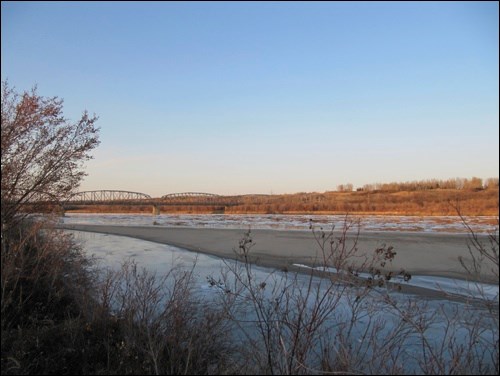A new voluntary carbon offset program has been announced for individuals and organizations.
The program is being offered through the Association of Saskatchewan Urban Parks and Conservation Agencies, which is planning to use revenues from this program to reforest and naturalize the ASUPCA's parks and conservation zones.
North Battleford Parks Director Keith Anderson describes the program as "fundraising in support of tree planting and reclamation projects," but notes it also gives people a chance to "voluntarily offset their carbon footprint by basically doing a carbon calculation of what their footprint actually is and offsetting it by giving money to an organization that in turn will plant trees to restore that carbon."
He said the project has been in development for about the last year and a half and Anderson said he believes it's the first one in the province to offer carbon offsets.
In a statement Bill Hutchinson, minister of Tourism, Parks, Culture and Sport, called carbon offset programs a "good way of supporting total carbon reduction programs."
"Using the money to build infrastructure, plant trees and restore natural areas will improve the parks and help make our visits to them even more accessible," he said.
ASUPCA will raise money through donations made by individuals and organizations after they go to a website at carboncreditcanada.ca.
At that website people can calculate the carbon footprint they leave from their various activities (ie. driving a carby taking part in a greenhouse gas emissions assessment.
The assessment calculates what the carbon offset cost would be and then individuals and organizations can then make donations through PayPal at that website.
So if people want to have a green conference, they can offset their air travel or vehicle travel by running their activities through the carbon calculator
That money would then go to ASUPCA member organizations and be put to use on ways to offset the carbon footprint. Those include reforesting areas through tree planting or through grasslands restoration. Also, some organizations such as the Meewasin Valley Authority might use that money to tap into alternative energy sources for their buildings.
The money can be designated to the agency as a whole or to any particular member organization in particular, such as Battlefords River Valley, for specific tree planting or reclamation activities.
The Battlefords River Valley is one of the seven ASUPCA members in the province that has chosen to conserve its parks and conservation zones, educating the public about them and developing them for public access.
According to Doug Porteous, president of ASUPCA, the members have three things in common: a water body, an independent board and a locally developed master plan.
"They are a model of what communities can do to conserve their natural areas for now and future generations," he said in a release.
ASUPCA also plans to report back annually on what is being done.
Anderson says the program is bound to benefit the Battlefords directly. There are some bad spots in the river valley, he said, that could benefit from reclamation projects.
These were areas that were forested at one point in time but became deforested for whatever reason, he said. Projects would be identified for reforestation and money would be used from the carbon offsets to purchase trees and do reforestation.
"It's a way to achieve the goals of the (River Valley) master plan quicker because there's another potential source of income to get that done, not just tax dollars," said Anderson.




